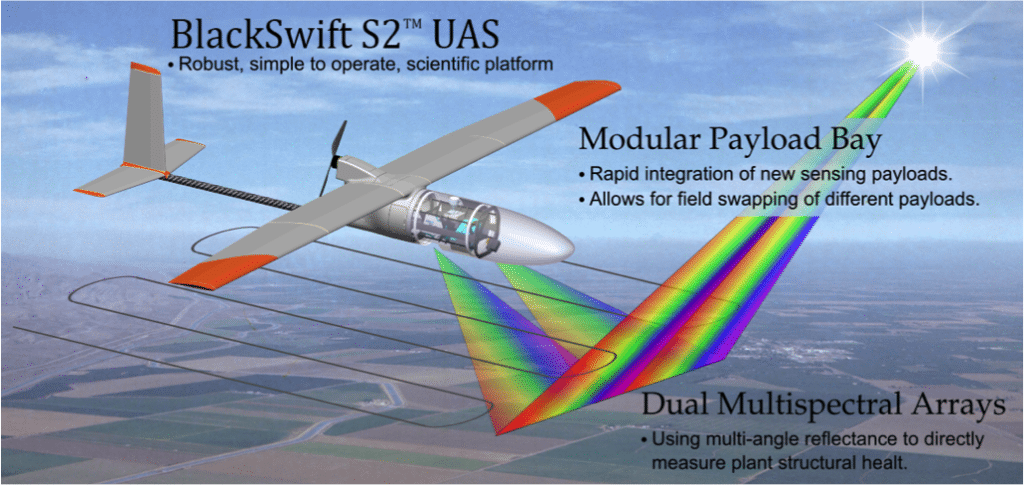
The Black Swift S2 UAS. Photo courtesy of Black Swift Technologies
Engineering firm Black Swift Technologies is engaged in a pathfinder mission with NASA’s Goddard Space Flight Center to develop enhanced multi-angular remote-sensing techniques using small drones.
These autonomous platforms can more effectively and efficiently monitor crop health and growth monitoring through the use of a narrow spectral band used to derive vegetation photosynthesis-related indices by tracking seasonally changing pigment ratios and photosynthetic rates not capable with established greenness indices.
The pathfinder mission, called MALIBU, uses Black Swift’s most advanced UAS, the Black Swift S2, to capture multi-angle reflectance measurements for land surface studies using multispectral imagers oriented at different viewing angles. MALIBU’s primary subsystem — a multi-angular sensor array based on the Tetracam mini-multiple camera array’s imaging system — generates science-quality reference data sets suitable for calibration/validation activities supporting NASA’s flagship Earth science missions.
While typical multispectral cameras might have five channels, MALIBU’s multi-angular sensor array comprises 12 sensors or channels. When combined, the cameras operate as a single sensor suite with a combined field-of-view of 117.2 degrees.
The MALIBU channels were specifically chosen to cover the relative spectral response of multiple satellite land sensors. By deploying MALIBU several times over a single day, data from multiple solar angles and multiple observation angles can be obtained, significantly improving the accuracy of BRDF retrievals.
MALIBU relies heavily on Black Swift Technologies’ proprietary SwiftCore FMS to achieve the accurate results the mission outlines. SwiftCore’s high-performance autopilot function allows the science team to deploy MALIBU at both AGL (variable height dependent on terrain) and MSL (near-constant height), generating multi-angle reflectance measurement techniques for land-surface process studies.